| T O P I C R E V I E W |
| Guido |
Posted - Aug 17 2009 : 06:25:59 AM
Hello friends
On eBay I found this stange camera, it looks like a black Zenit D:
http://cgi.ebay.com/ws/eBayISAPI.dll?ViewItem&item=160273982834

http://arvitas.com.ru/175/175zd.jpg

http://arvitas.com.ru/175/175zd1.jpg
According to the s/n it may be build in 1979.
In the text a spy device called "NEGUS" is mentioned. Do anyone know anything about this device and the camera used with it?
Best wishes - Guido
|
| 16 L A T E S T R E P L I E S (Newest First) |
| Luiz Paracampo |
Posted - Sep 15 2009 : 09:52:05 AM
Nathan!
Excellent information about Negus set!
The pan head base and low tripod is of Moskinap (MK) manufacture famous for their Professional movie cameras!
Another fantastic is the binocular viewing and focusing!
LP |
| Detlev |
Posted - Sep 15 2009 : 05:12:56 AM
Negus is a zoom lens: focus 500 mm to 3000 mm, aperture from 1:5 to 1:17. The manual shows a special camera "Negus-2".
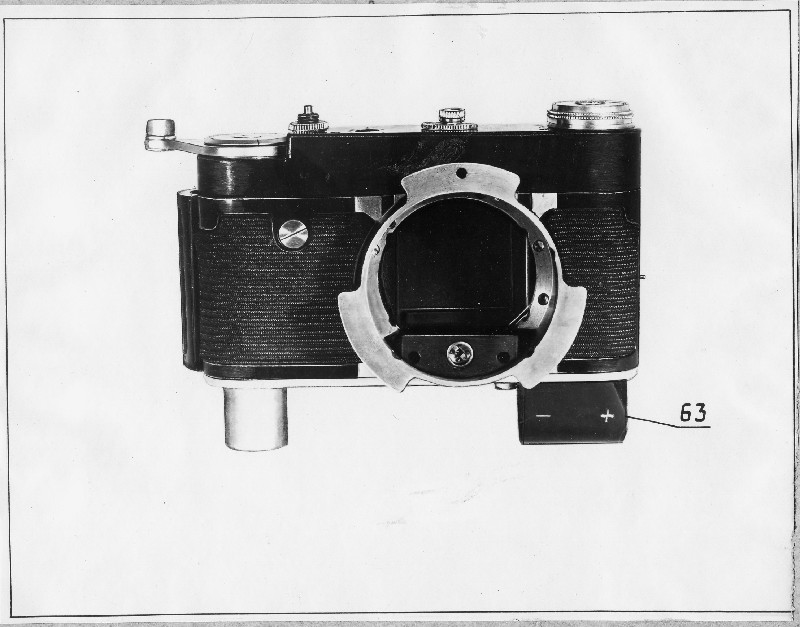
http://www.ussrphoto.com/UserContent/1592009_Negus-43.jpg
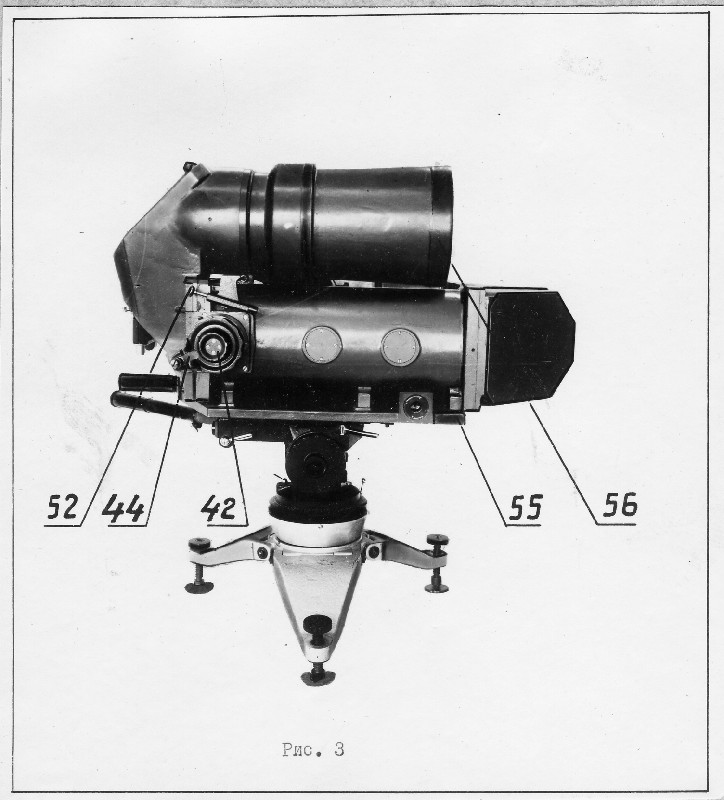
http://www.ussrphoto.com/UserContent/1592009_Negus-39.jpg
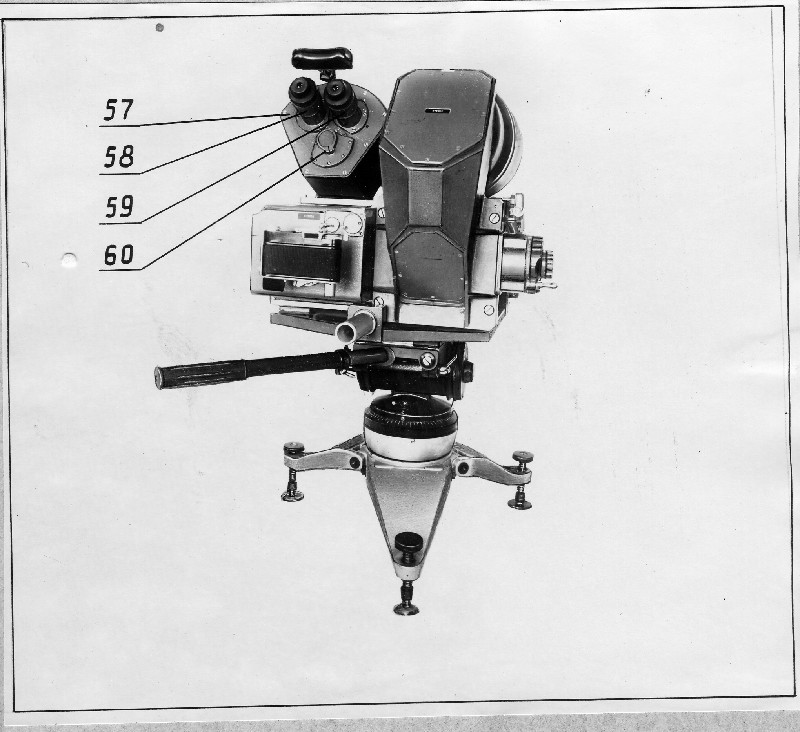
http://www.ussrphoto.com/UserContent/1592009_Negus-40.jpg
|
| Vlad |
Posted - Sep 03 2009 : 11:03:40 AM
       
This is something I would call heavy KGB artillery...  WOW!! WOW!!
Vlad |
| Detlev |
Posted - Aug 26 2009 : 1:22:15 PM
I got the information that only 4 Negus sets have been made.
Negus was produced as the biggest photo camera for KGB to take pictures on the distance 500 - 1000 meter or more.
It was used to take pictures of people, their actions, things in hands, open dead drops. Also to take pictures inside apartments or even to look at letters on the table.
Negus 2 used a special camera "Negus 2" instead of Zenit D.
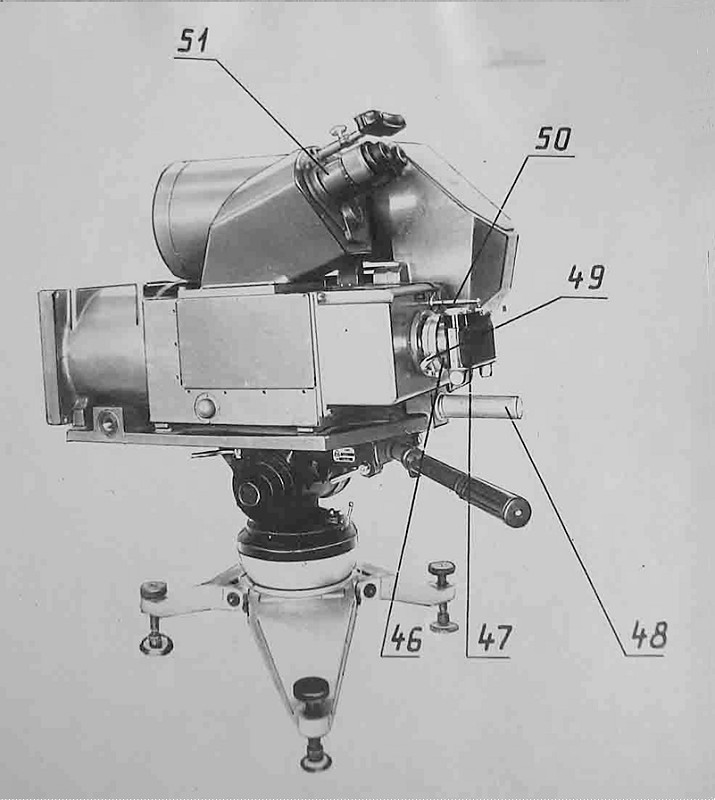
http://www.ussrphoto.com/UserContent/392009_Negus-2.jpg
a |
| Zoom |
Posted - Aug 20 2009 : 12:02:33 PM
quote:
Originally posted by Vlad
wasn't it made for photographing the Earth from Satellite?
Yes.
quote:
Originally posted by Vlad
Very impressive work by GOI..
They have calculated the optical scheme... Designed and manufactured by KMZ. It was in the end of 1960s.
Later other lenses, with more best optical characteristics has been designed (Mezon-3A by GOI and KMZ, Kentavr [Centaur] -- KMZ). But this new lenses are less on dimensions and weight... |
| Vlad |
Posted - Aug 20 2009 : 11:33:37 AM
Wow!!  I've seen a different picture of it before... wasn't it made for photographing the Earth from Satellite? Very impressive work by GOI.. I've seen a different picture of it before... wasn't it made for photographing the Earth from Satellite? Very impressive work by GOI.. |
| Zoom |
Posted - Aug 20 2009 : 11:16:16 AM
quote:
Originally posted by Guido Studer
In our days we can find things like this:
The Zeiss Apo Sonnar T* 1700mm/4, a monster device with 256kg ...
http://www.dpreview.com/news/0610/06100101zeiss1700f4.asp
Zeiss can't beat this:

This is Mezon-2A, apparently, the biggest dioptric photographic lens in the world ever made.
f = 3000 mm, weight = 500 kg, lens diameter = 600 mm (it is impossible to make more, glass starts to flow). |
| Guido |
Posted - Aug 20 2009 : 05:44:20 AM
Hello friends
There are very interesting details I can read here! Thank you all.
To the last question from Vlad: Well, I don't know the definition about the difference between a larg telephoto lens and a telescope, but I think we can talk about a telephoto lens in this case. In our days we can find things like this:
The Zeiss Apo Sonnar T* 1700mm/4, a monster device with 256kg ...
http://www.dpreview.com/news/0610/06100101zeiss1700f4.asp
Luis, you are probably right with the optical path you have drawn. And I'm also thinking that the reflex mechanism is an additional one outside the camera body. The reason for this may be the need for a better viewfinder with the decomposer prism.
For the auto focus ... I can't see any evidence for such a function in the drawing. It would make no sense to me to have such a complicated optical system in the region of the viewfinder for the AF-sensor. It could be mounted just above the decomposer prism.
My guess for the double viewfinder is, that one shows the total of the picture and the other is a focusing aid with strong magnifier.
I can't see also any motor on the drawing. Okay, this little device near the reflex mirror could be one, but I think this could also be an electric magnet for moving the mirror.
There are also two rotary knobs (see 42-45) maybe for manually adjusting the focus (but don't ask me why there are two knobs needed for this ...).
Best wishes - Guido
|
| Vlad |
Posted - Aug 19 2009 : 7:54:33 PM
Any speculation what this camera was made for? 3000mm! Is this a telescope? |
| nightphoto |
Posted - Aug 19 2009 : 7:50:22 PM
I think, what you see on the schematic, as far as the reflex mechanism, is the inside of the Zenit-D, not an added reflex mechanism.
I wonder where the lens is? It would be wonderful to have the camera as it is shown in the set of photos that Luiz posted, which includes the winding motor, and the 3000 mm lens ... all as one original set!
Regards, Bill
|
| Luiz Paracampo |
Posted - Aug 19 2009 : 6:25:08 PM
The same schematics with optical behaviour
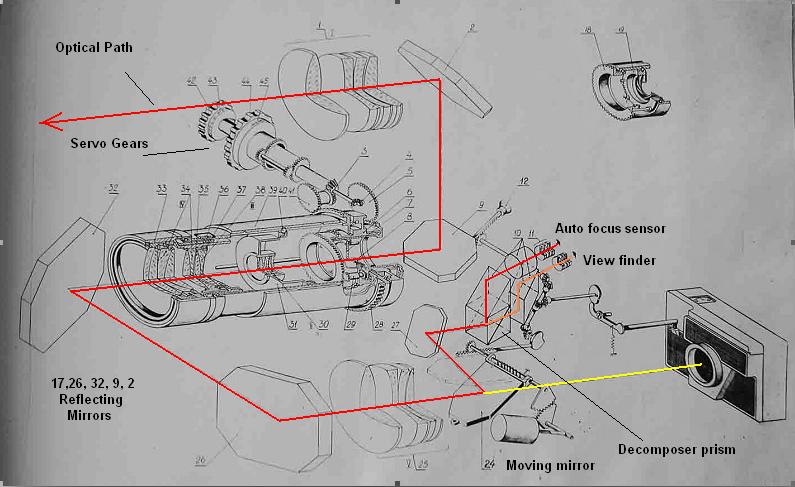
http://www.ussrphoto.com/UserContent/1982009_zenitDKGB1.JPG
LP |
| Luiz Paracampo |
Posted - Aug 19 2009 : 6:07:29 PM
Hello Detlev!
I did see the schematics and qustion!
Why a second reflex fider in a reflex camera?
regards
LP |
| Detlev |
Posted - Aug 19 2009 : 10:30:31 AM
The seller says the lens weighs around 150 kg.
The lens has around 3 000 mm focal distance. It was made to take pictures in the distance of 1 km or more.
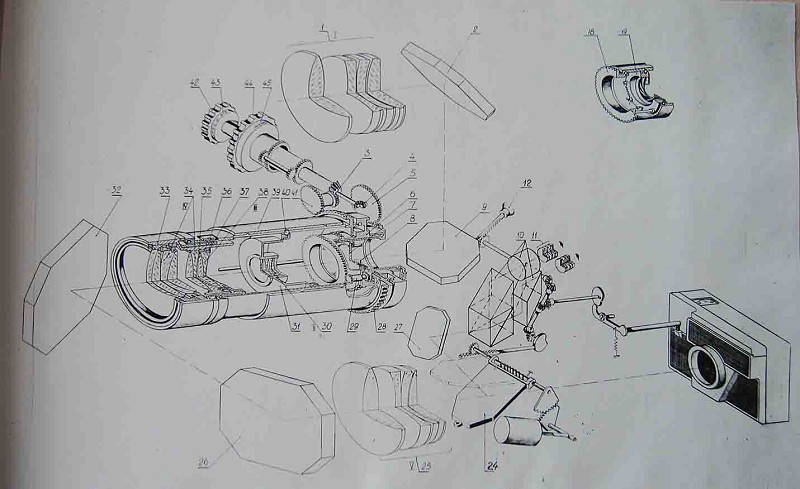
http://www.ussrphoto.com/UserContent/1982009_175zd9.jpg
|
| Luiz Paracampo |
Posted - Aug 18 2009 : 8:56:23 PM
Another more complete strange version of the same camera.
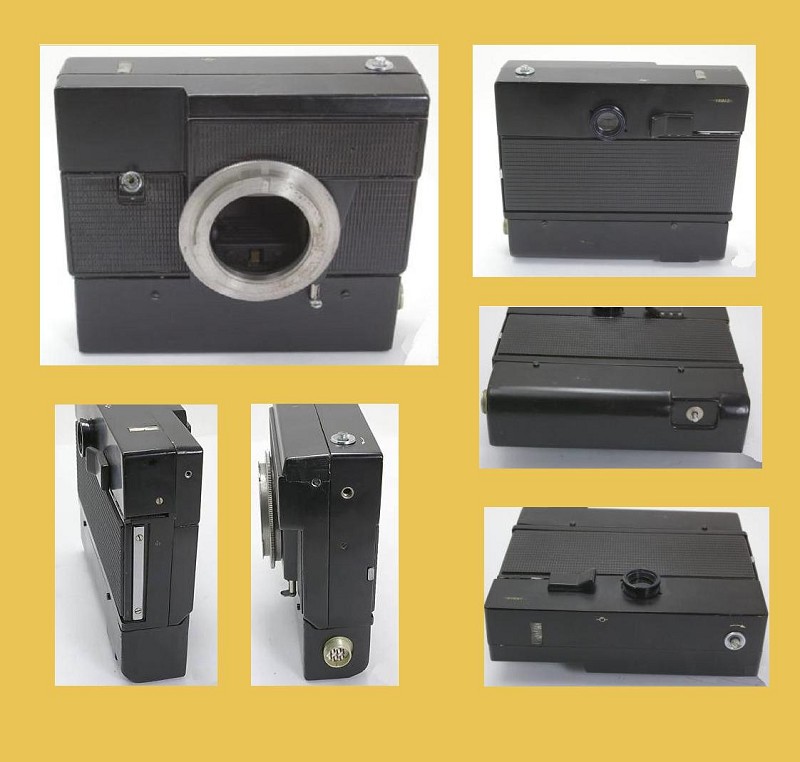
http://www.ussrphoto.com/UserContent/1882009_zenitDKGB.JPG
Regars
LP
|
| nightphoto |
Posted - Aug 17 2009 : 11:23:59 PM
Hi Guido,
I don't have any specific information about this camera, but the schematic shown in the auction description looks very much like those shown in the manuals of other KGB surveillance cameras. And the style of engraving is like the KGB cameras ... not like the style on the Zenit-D.
My guess would be that since the Zenit-D was not a successful series camera, KMZ had parts left and they were used to make this surveillance or technical camera.
Also, it seems that black is the color used for many KGB and police cameras.
I'm not too good at looking at the schematics, but to me it looks like it had a motorized focusing mechanism is the lens (not present) and also motorized winding mechanism unit (also not present).
Probably the beginning of the serial number does represent 1979 ... about 9 years after the Zenit-D was last made as a consumer product.
The seller has had this camera up for several months, but the price is high for an incomplete item.
You can compare features and serial numbers with the photos I took of my Zenit-D, which is complete and fully functional:
http://www.nightphoto.com/zenitd.html
Regards, Bill
|
| Vlad |
Posted - Aug 17 2009 : 7:14:19 PM
Hi Guido, this probably would be a good question for Detlev ... I'll see if I can get ahold of him so he looks at this..
Vlad |
